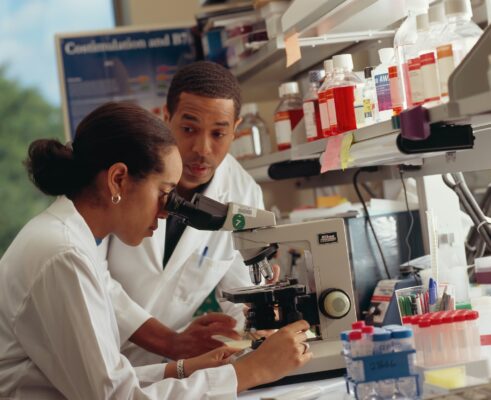GENETIC / FAMILIAL PHEOCHROMOCYTOMA / PARAGANGLIOMA SYNDROME
Genetic/familial pheochromocytoma/paraganglioma syndromes are inherited syndromes predisposing to pheochromocytoma and or paragangliomas.
40% of patients with pheochromocytoma/paraganglioma have the disease as part of a genetic/familial syndrome, inherited through genetic mutations. However, only 10-15% of patients are aware of a family history consistent with such a genetic mutation.
TopThe tumours in these syndromes develop at least a decade earlier (e.g. 29 years is the average age for mutations of the SDHB and SDHD genes), are often multiple, bilateral, coexist with other tumours, endocrine and non-endocrine, and are often multifocal.
TopSome genetic mutations are associated with an increased risk of metastases, such as mutations in the SDHB gene, which are found in 40% of metastatic pheochromocytomas/paragangliomas.
TopThe most common genetic syndromes of pheochromocytoma/paraganglioma are the following:
Top
VHL is a familial syndrome, predisposing to the development of multiple vascular tumours, such as:
The disease is inherited in the autosomal dominant pattern and its incidence is 1 in 36000 births.
.
TopThe average age of pheochromocytoma/paraganglioma presentation is 28 years, while the youngest age reported is 5 years. Pheochromocytomas are often bilateral.
TopPatients with VHL disease are at increased risk of developing kidney cancer, which occurs in about 2/3 of patients.
TopCarriers of the mutation need regular monitoring, starting at birth, for early diagnosis and treatment of tumours.
TopNeurofibromatosis is a genetic disorder that is also inherited in an autosomal dominant pattern and its incidence is 1 in 2600-3000 individuals.
TopPatients, during their lifetime, experience a number of clinical manifestations, such as:
Pheochromocytoma/paraganglioma can occur at any age from infancy to old age with an average diagnosis of 42 years.
TopPatients with neurofibromatosis have an increased risk of developing malignant nerve tumours, malignant tumors of the gastrointestinal system and rhabdomyosarcomas.
TopIn this genetic syndrome as well, regular, lifetime monitoring is vital.
TopSuch syndromes are associated with hereditary pheochromocytoma/paraganglioma and are caused by mutations in the SDHD, SDAF2, SDHC, SDHB enzymes, which are essential for energy production in cells. They are called familial paraganglioma syndrome 1, 2, 3, 4, respectively and are inherited in an autosomal dominant pattern.
TopThe most common of these syndromes is the familial paraganglioma syndrome 1, where patients develop pheochromocytomas/paragangliomas only if they inherit the mutation from their father rather than their mother. 50% of patients will develop tumours by the age of 31. On the other hand, carriers of the mutation for the SDHB gene develop pheochromocytomas/paragangliomas whether they inherit the mutation from the father or the mother.
TopPatients with familial paraganglioma syndrome 1, 2, 3, 4 have an increased risk of malignancy. For example, patients with familial paraganglioma syndrome 1 are likely to develop renal cell carcinoma and gastrointestinal stromal tumours, while carriers of the mutation for the SDHB gene have an increased risk of malignant paraganglioma and kidney cancer.
TopSimilarly, in this genetic syndrome, regular, lifelong monitoring is vital.
Top